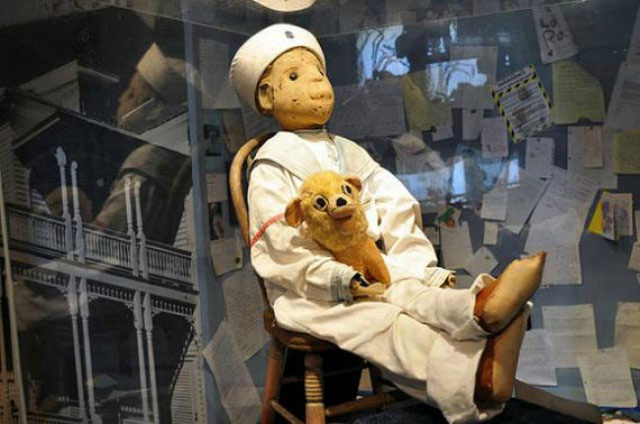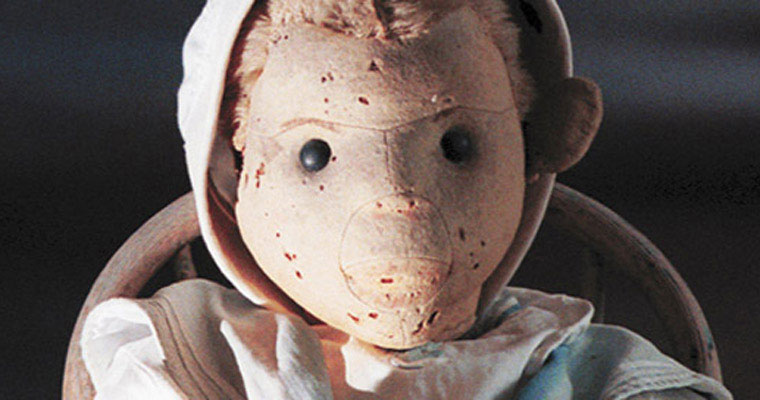The secret behind the cursed doll in the American Museum
Many visitors sent letters to apologize to Robert dolls for their disrespectful attitude, others asked for advice or curse for those who treated them badly.
Robert is a 111-year-old doll on display in Fort East Marterllo Museum (Key West, Florida, USA). Previously, Robert used to be an isolated object by artist Robert Eugene Otto, son of a noble family in Key West. With the same name as the owner, the Robert doll, originally a birthday present from Germany by artist Otto, followed him to his adult years. Otto takes it everywhere, he talks about it as a living entity.

Sailor costume Robert wore on his clothing the owner he had worn when he was a child.(Photo: Slate).
According to rumors, Otto as a child often blamed Robert dolls for his misfortune. Although it is considered childish, the adults of that time also realized many strange things about Otto and the doll. Otto grew up with Robert, he started calling the place where he lived "The Artists' House" and placed the doll on the stairs window. The children told them that when they saw Robert when he was hiding, they often stayed away from Otto's house.
When Otto died, Myrtle Reuter bought the house and took Robert in 1974. Visitors said they heard footsteps in the attic and giggles in the house. Some people said Robert's expression changed when anyone spoke ill of Otto in front of him. Reuter recalled that the doll moved around the house on its own. After 20 years of care, she gave Robert to the Fort East Marterllo museum.
Since Robert moved to his new home, his life has completely changed. Visitors flocked to admire the doll. Robert began appearing on television, appearing on ghost hunting tours or inspiring cinema. Fans can buy copies of Robert, books, T-shirts and even write to it.

Many visitors reflected that Robert changed his expression when someone spoke ill of the former owner.(Photo: Modern Notion).
Cori Convertito, curator of the museum, said dolls Robert received one to three letters a day. The number of letters is not entirely written by fans. Often they are sent from disrespectful people when Robert comes to the museum, they write apologies and ask for forgiveness. Others ask for advice or curse those who treat them badly. The convertito revealed that the museum received and classified about 1,000 letters to Robert. Some visitors knew that Robert had milk teeth, and sent him candy and money.
Mrs. Convertito has a duty to take care of "health" for Robert dolls, manage her email and personal pages on social networks. Talking about whether Robert's doll was haunted, Convertito shared that she really didn't know because she always felt comfortable working with it. The relationship between her and the doll is purely work.
- First opened the mysterious 'cursed crypt' in Egypt
- The shocking truth inside the CIA's top secret museum
- The most exotic islands in the world
- Behind the lovely sunshine doll of Japanese people is a pretty scary story
- Cursed items
- Strange feeling in the dark night at the museum
- Revealing the secret of the place to store the whole world
- 4 continents and 6 cursed locations are unknown
- The beaver teeth cut the wooden doll 10,000 years
- Cursed treasures
- The ship is cursed and the treasure is missing
- 7 most horror museums in the world
 'Fine laughs' - Scary and painful torture in ancient times
'Fine laughs' - Scary and painful torture in ancient times The sequence of numbers 142857 of the Egyptian pyramids is known as the strangest number in the world - Why?
The sequence of numbers 142857 of the Egyptian pyramids is known as the strangest number in the world - Why? Miracle behind the world's largest stone Buddha statue
Miracle behind the world's largest stone Buddha statue What is alum?
What is alum?